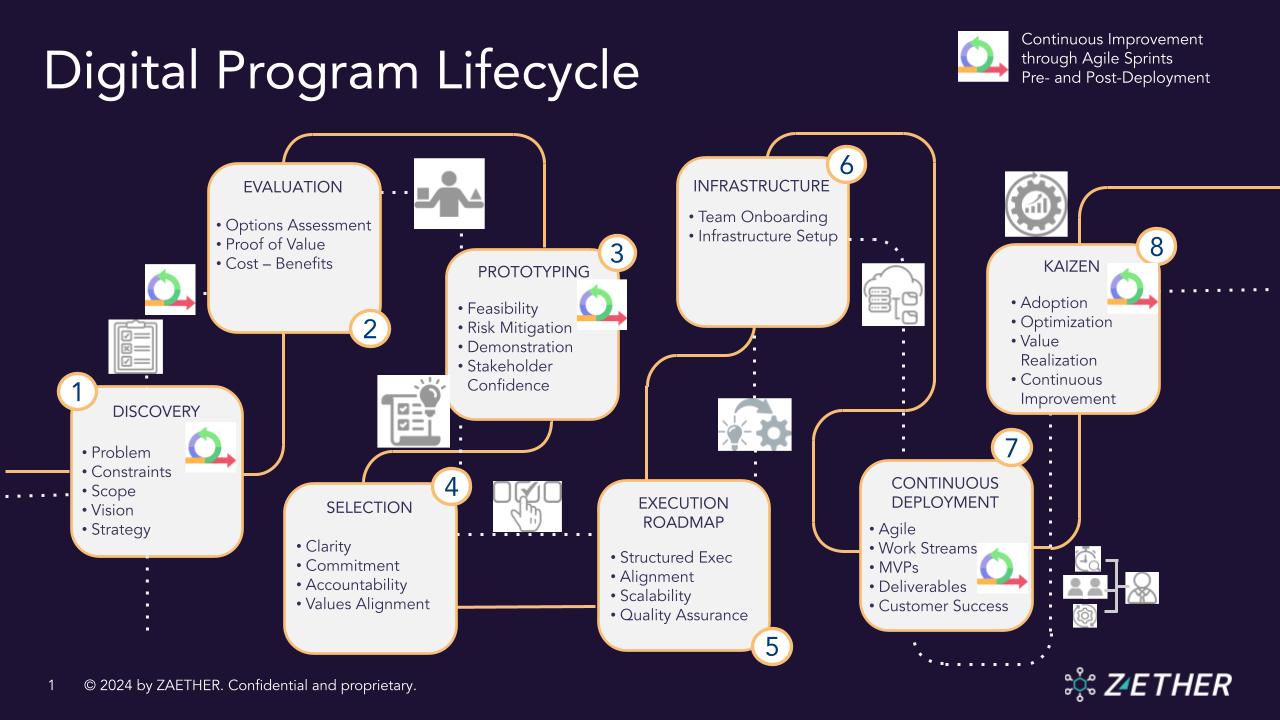Many Digital Projects End in Brilliant, Highly Visible Failures
Digital programs require building agility and continuous alignment into teams. Especially when projects involve first-in-kind deployments with unclear requirements, misaligned stakeholders, and distributed ownership. These high-risk projects require a different approach to gaining alignment and ownership, as well as reducing the risk of building something that no one can use or support. There are several key behaviors that need to be built into the project teams to ensure a successful deployment.
Successful digital programs focus on lean principles:
- Understand the value
- Map how value is delivered
- Create a frictionless workflow
- Minimize inventory while ensuring users are not waiting for anything
- Implement continuous improvement
But also include the IT principles of agile, DevOps, and CI/CD:
- Effective communication, not following rigid processes
- Continuous small changes to production software, not big deployments
- Continuous communication with stakeholders, not planned milestones
- Continuous adjustment of the plan, not a completed set of tasks (focus on value)
- Automate what you can (e.g., infrastructure as code)
The first and most critical step for anyone onboarded into a new situation is to get situational awareness through a discovery phase. Resources who come in with a playbook, experiences, and an understanding of your business and work practices will get to value faster. There are several approaches to gaining current-state situational awareness, but what is important is that they listen and ask questions to understand pain, vision, constraints, and success metrics. Every situation is unique, so stakeholders must give their time freely during this phase to ensure newly onboarded resources fully understand the challenge they are attempting to solve. Stakeholder commitment doesn’t end in the discovery phase but must continue throughout the journey to ensure nothing is lost and the digital team stays aware of changing objectives.
